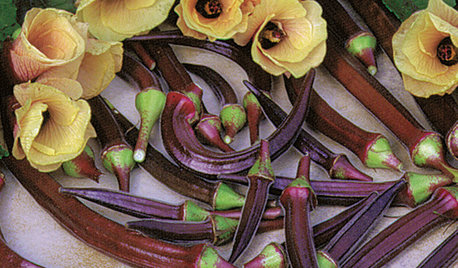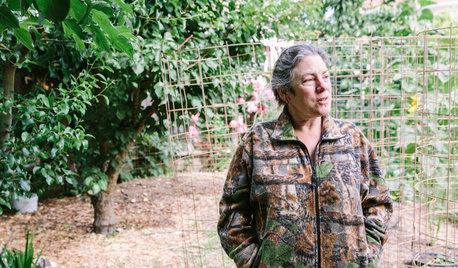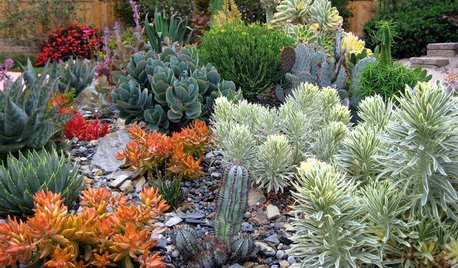What does okra need to grow well?
arielphf
9 years ago
Related Stories

GARDENING GUIDESSummer Crops: How to Grow Okra
Go for the gumbo with this quick-growing edible that brings colorful pods and delicate flowers to a summer garden
Full Story
FARM YOUR YARD6 Things to Know Before You Start Growing Your Own Food
It takes time and practice, but growing edibles in the suburbs or city is possible with smart prep and patience
Full Story
FARM YOUR YARDTo Get the Food They Believe In, These Urbanites Grow Their Own
Home gardeners farming on their city lots find that local, organic food isn’t the only reward
Full Story
EDIBLE GARDENSHouzz Call: What Did You Grow This Summer?
Let’s celebrate the homegrown fruits and vegetables of the season. Post your pictures and tell us about your harvest
Full Story
GARDENING GUIDESA Beginner’s Guide to Growing Succulents
Their easy-care reputation is well-deserved, but a little TLC will turn succulents into star plants
Full Story
MOST POPULARWhen Does a House Become a Home?
Getting settled can take more than arranging all your stuff. Discover how to make a real connection with where you live
Full Story
LIFEHouzz Call: What Does Summer Look Like at Your Home?
Kids, water, sunshine, backyards, cold drinks — share photos of what summer at home means to you
Full Story
FUN HOUZZDoes Your Home Have a Hidden Message?
If you have ever left or found a message during a construction project, we want to see it!
Full Story
FUN HOUZZ10 Truly Irritating Things Your Partner Does in the Kitchen
Dirty dishes, food scraps in the sink — will the madness ever stop?
Full Story
LANDSCAPE DESIGNDoes Your Landscape Need a Little ‘Cosmic Latte’?
Beige — the color of the universe — can be both building block and backdrop in a contemporary garden
Full Story






jean001a
grandad_2003
Related Professionals
North New Hyde Park Landscape Architects & Landscape Designers · Palm Springs Landscape Architects & Landscape Designers · San Juan Landscape Architects & Landscape Designers · Aurora Landscape Contractors · Hartford Landscape Contractors · Wilmington Landscape Contractors · Tempe Landscape Contractors · Clark Landscape Contractors · Dinuba Landscape Contractors · Downey Landscape Contractors · Kaysville Landscape Contractors · Plymouth Landscape Contractors · 07920 Landscape Contractors · Four Corners Landscape Contractors · Wildomar Driveway Installation & Maintenanceplanatus
arielphfOriginal Author
zeedman Zone 5 Wisconsin